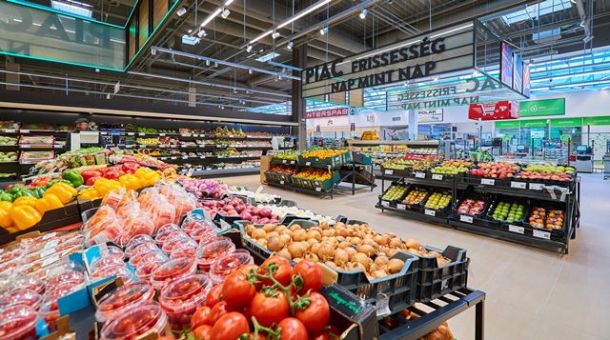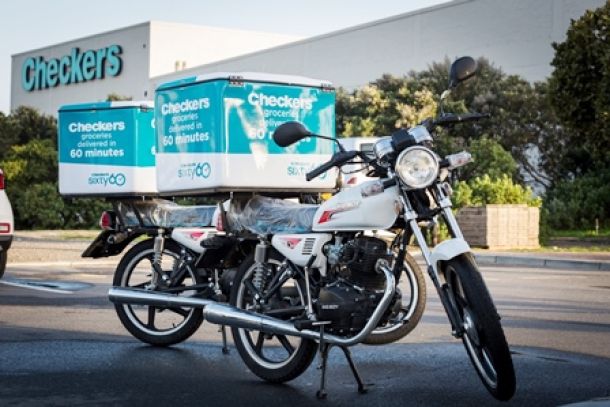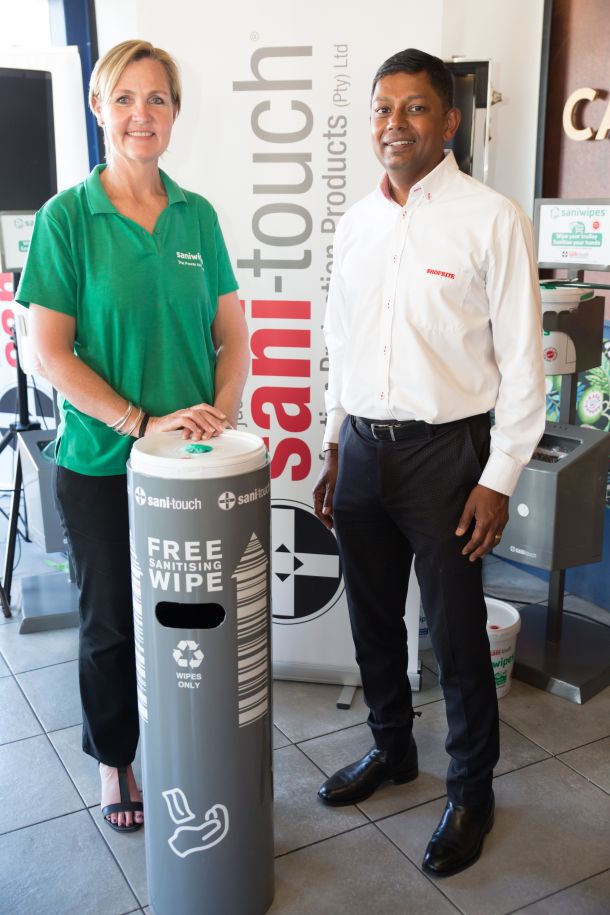Bargain-chasing shoppers shake up UK market
Janet Wadsworth abandoned UK grocery giant Tesco for discounter Aldi after the German chain opened a store near her home in the English village of St Bees three years ago.
"It used to be that people might have been embarrassed to be seen at Aldi," says the teacher. "But I think that’s gone."
Ms Wadsworth is part of a new wave of British shoppers chasing bargains with little regard to where they find them. The shift — driven here in large part by two, newly aggressive German discounters, Aldi and its archrival Lidl — has shaken the UK’s $274bn grocery industry to its core. The traditional UK grocer "had huge margins", says David Herro, a fund manager at Chicago-based investment firm Harris Associates, which, until recently, was a large Tesco shareholder.
In the current environment, "it’s like exposing your neck to the discounters, like to a vampire", he says.
Indeed, as the discount-driven German duo expanded offerings, they have stolen away market share from the country’s traditional players. Those grocers, in turn, have seen their stock prices plummet, triggering executive ousters, layoffs and billion-dollar write-downs.
Such turmoil here is reminiscent of some of the same industry headwinds hitting grocers elsewhere — particularly in the US. With discounters on one end, and upscale grocery chains on the other, opposing forces are pressuring profits. The result has been forced consolidation and, in some cases, more desperate measures.
On Monday, Tesco, the UK’s largest retailer, said it had agreed to sell its South Korea business for $6.1bn in cash — a retrenchment that comes after the grocer has also quit Japan and the US and been forced to strike a joint venture for its Chinese operations as it works to stem the slide in market share back home.
"Our business has not been as competitive in recent years as we would like it to be," acknowledged Tesco CEO Dave Lewis on an April conference call.
Andy Clarke, CEO of Wal-Mart Stores’s Asda, Britain’s second-largest grocery chain, has been more blunt, calling the goings-on "the worst storm in retail history".
Similar challenges are washing up on US shores. A&P, America’s first traditional supermarket chain, with roots dating back to 1859, said in July that it would close or sell its remaining stores as part of its bankruptcy filing. The move comes after years of it being squeezed by an array of new competitors, such as Whole Foods Stores on the high-end to cheaper alternatives like Wal-Mart and Aldi.
Seeking scale in the US and Europe, Dutch grocery giant Royal Ahold and Belgian rival Delhaize Group agreed in June to merge in a deal that will create a $29bn titan — combining American chains like Food Lion and Stop & Shop.
The $1-trillion US grocery market remains largely regional and fragmented, despite a wave of consolidation in recent years. That insulates it somewhat from the sort of carnage ravaging the UK market. Here, the country’s four biggest grocers are national chains that butt heads everywhere, and on everything from online deliveries to supplier relationships.
But now, the two scrappy German discounters that have wreaked the most havoc in Britain are ratcheting up their US ambitions.
In June, Aldi’s US operation said it would pour about $3bn into opening new stores, including across the large southern California market. It plans to operate 2,000 stores by the end of 2018, up from the 1,400 it runs now across 32 states.
Kroger, by comparison, operates about 2,600 stores in 34 states. A day after Aldi’s US announcement, Lidl — owned by Germany’s Schwarz Group, Europe’s largest retailer — fired back, outlining its own plans to enter the market, probably by 2018.
Analysts and others say the moves threaten to pressure discount chains like Wal-Mart and Supervalu’s Save-A-Lot, but could also further shake up the wider US market.
"They’re on everybody’s radar in the US today," says Craig Rosenblum, partner at retail consultancy Willard Bishop, of Aldi and Lidl, adding: "Everybody knows how successful they are in Europe."
Long looked down on in class-conscious Britain, no-frills Aldi and Lidl gained traction only after the recession here. At the time, the country’s biggest grocers kept jacking up prices, even as unemployment jumped and customers tightened their purse strings.
"At a time of slow to declining volumes, they attempted to raise prices and widen margins," says Andy Higginson, chairman of number four British chain Morrison and a former board member at market leader Tesco.
"Customers recognised this and voted with their feet."
Aldi and Lidl acted swiftly, ramping up advertising and expanding their product lines to include more fresh produce and baked goods. The two chains together now command 9.7% of the British market as of August 16, according to research company Kantar, up from 5.9% three years before.
Even their competitors acknowledge the creeping threat. "I believe the discounters will get to 15% of the UK grocery market by 2022," said Sainsbury’s CEO Mike Coupe at a meeting with journalists in May.
Aldi and Lidl, he said, were "formidable competitors."
The chains have kept prices low by prioritising speedy store deliveries, efficiency and high turnover at the expense of breadth of offerings and customer service. As part of that push, Aldi and Lidl take daily deliveries of a slim range of mainly private-label products, often with the look and feel of popular, branded items.
"By not offering this huge variety we’ve made the offering and our range efficient," says Lidl marketing director Arnd Pickhardt. "We provide just a handful of different mineral waters, about seven, compared with other supermarkets that have a whole aisle full of space" for waters, he says.
The stores’ smaller footprint also saves on costs. Some products are sold directly off the delivery pallets, while others arrive in boxes with open fronts, allowing the staff to quickly move them in bulk onto store shelves without being unpacked from the boxes. Lidl drives its trucks through the night to avoid traffic and save fuel. Both grocers charge for bags, which customers take to packing areas that help keep the register areas moving.
Aldi and Lidl cashiers also do double duty, stocking shelves when things are slow.
"We can operate at a far lower margin because of our efficiency," Aldi UK group buying director David Hills says. "Everyone in our shops needs to do every job from mopping to check outs."
Shoppers have been willing to go with the programme in return for better prices. Nick James, an urban planner in London, used to frequent Sainsbury’s until he wandered into a Lidl to buy a croissant about 18 months ago. Lidl has "funny European brands", he allows, and the stores are not "quite as plush or neatly presented" as those at Tesco or Sainsbury’s, which competes with Asda for the market’s number two position. He says he also finds it "really frustrating" when he cannot find anyone at the cash registers to check out. Still, he has switched to shopping almost entirely at Lidl because "the quality is just the same, but the prices are more affordable".
The Germans’ success is proving calamitous for Britain’s traditional grocers. In the past year, shares of Tesco, Sainsbury’s and Morrison have fallen more than 13% on average, amid profit warnings, billions in property write-downs, and cancelled or slashed dividends. They have axed jobs and closed or shelved plans to open stores. Two of the three have recently ousted their CEs. Yet the results have been a boon for consumers. A loaf of whole wheat bread here now costs an average of 98 pence, down 15% from a year ago, according to the Office of National Statistics.
Shopping has also never been so convenient, with the big grocers expanding their click-and-collect services — allowing customers to order online and pick up from stores, petrol stations or other locations.
Morrison has cut prices on 1,665 products by an average of 16% since the start of last year. Wal-Mart’s Asda, meanwhile, earlier this year plowed nearly £300m into reducing the prices of 2,500 basic items; Sainsbury’s dedicated £150m to fund lower prices.
Tesco had weathered the recession of the early 1990s better than rivals by introducing lines with bare-bones packaging that appealed to cash-strapped shoppers. It rolled out a pioneering loyalty card — now copied the world over — that tracked shoppers’ habits. Memorable TV ads featured a dedicated but hapless Tesco buyer, played by Dudley Moore.
"In that period, Tesco did a good job of understanding the changing environment and readjusting its overall competitive offer," says Terry Leahy, who took over as CEO in 1997. Over the next 14 years, he transformed the chain into a global retail powerhouse, competing on the world stage with Wal-Mart and France’s Carrefour. Then the latest recession hit Britain in 2008 amid the global economic crisis. Unemployment jumped, leaving increasingly panicky customers hunting for bargains. But grocers raised prices — passing along higher commodity costs to defend margins.
Grocery inflation peaked at 9.3% year-on-year in October 2008, according to Kantar. "They had such a strong grip on the market that obviously they felt they could do it," says Bruno Monteyne, a Sanford C Bernstein analyst who worked as a Tesco executive for 10 years.
Margins at Tesco, Sainsbury’s and Morrison rose steadily through the downturn, to an average of 8.1% in 2010, from 5.8% in 2005, according to Bernstein. Over the next few years, the economy started to perk up, but worried shoppers stayed frugal.
Tesco’s CEO at the time, Philip Clarke, rolled out a £500bn price-cutting campaign nicknamed the Big Price Drop shortly after taking the helm from Mr Leahy in 2011. Critics said the cuts did not go far enough and dubbed it the Big Price Flop.
Mr Clarke could not be reached for comment. A spokesman for Tesco did not respond to a request for comment. Mr Clarke also poured £1bn into revitalising sales: updating stores and brands, reining in store expansion and cutting prices, among other moves. But after two consecutive years of falling profits, the board replaced him last year with Unilever veteran Mr Lewis — the first outsider CEO in its history.
Mr Leahy said Tesco’s strategic direction was the right one during his tenure as CEO. "It was from 2011 onward that strategies failed to gain traction and resulted in market share loss," he said.
An accounting brouhaha made matters worse. Shortly after Mr Lewis started, Tesco disclosed it had overstated profit in the first half of 2014 by £263m. The UK’s Serious Fraud Office (SFO) — which has the jurisdiction to criminally prosecute entire companies, as well as individuals, on matters relating to fraud, corruption and bribery — in October opened a criminal probe. Tesco at the time said it was "co-operating fully with the SFO and will continue to do so".
Around that time, Warren Buffett publicly characterised his underperforming investment in Tesco as a "huge mistake". Last year he unloaded most of what had been a 3.98% stake in the company.
Others decamped, too. Mr Herro says the firm had owned 3.2% of Tesco’s shares last summer but has since sold virtually its entire stake.
This past April, the retailer reported its steepest annual loss on record, partly because of a £4.7bn property write-down. Tesco’s big stores are "a noose around their necks", says Mr Herro.
Mr Lewis, meanwhile, is not prepared to go so far. In April, the CEO pointed out to journalists that shoppers still visited big stores. "Maybe they aren’t the dinosaurs that people have painted them to be," he said.
Mr Lewis has slashed prices by 25% on average across hundreds of branded products. He has also closed dozens of stores and cut thousands of jobs at Tesco’s head office. He has beefed up the number of employees on the shop floor and slimmed down Tesco’s product range to make space for the most popular items. He continues to try to turn Tesco’s biggest stores around.
For shoppers who want to linger, or even make a day of it, an 25,603m² store in the London suburb of Watford has a nail bar and a community room for activities like yoga, an optician, and a restaurant, among other diversions.
Tesco and its competitors have also been opening smaller, urban shops at a brisk clip.
Aldi and Lidl, meanwhile, are pressing their advantage, adding fancier new fare. Ms Wadsworth of St Bees is a fan of Aldi’s cheese, Prosecco and smoked salmon.
"They also do some fantastic fish cakes that are absolutely out of this world," she says.
News Category
- International retailers
- On the move
- Awards and achievements
- Legislation
- Wine and liquor
- Africa
- Going green
- Supplier news
- Research tools
- Retailer trading results
- Supply chain
- Innovation and technology
- Economic factors
- Crime and security
- Store Openings
- Marketing and Promotions
- Social Responsibility
- Brand Press Office
Related Articles

Spar reports growth of 3.3% as global retail sa...

Informal Retail in Africa: Could Technology be ...

Consumers need a good reason to shop this Black...

Checkers launches deals onto its Sixty60 home d...


